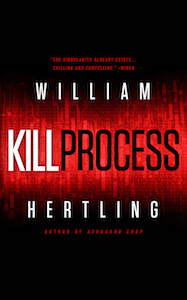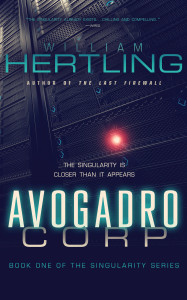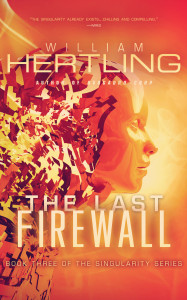I attended Lean Buley’s virtual seminar on lean UX methods – lean as in lean production. A core tenant of lean production is to avoid producing waste. If you are a UX team of one person, then you don’t have to time to generate anything that isn’t of value.
It was a great talk, and I love the high-value tools that she suggests for lean UX. Below you’ll find my raw notes for her talk, and her slides are available.
Lean Methods for a UX Team of One
Leah Buley
From Adaptive Path
- Jared Spool: Activity centered design is the most expensive form of design. But it gets results.
- How can we streamline the work we’re doing to make it leaner?
- Taiichi Ohno created the Toyota Production System – first Lean Production System.
- Lean comes from production systems. Fine-tuned to eliminate waste.
- When Toyota came to U.S. to observe auto production systems, they saw that there was a ton of waste: stuff sitting around. On the other hand, they were really impressed by grocery stores, where stuff was only ordered after it had been sold. Inventory levels managed really tightly.
- James Womach, wrote The Machine That Changed the World and coined the term “lean”. Patron saint of Agile.
- Getting to value as directly as possible by eliminating waste whenever possible.
- Eric Ries – you should test your hypotheses against reality as early as possible. Learn, evolve, and repeat. “lean startups”.
- Janice Fraser, founder of adaptive path, says early stage companies need design skills in house, and the best way to get that is to train principles into the company to get people to have design principles.
- Lean wondered: can lean concepts be applied to UX so that things can be sped up, more efficient. It’s not just to avoid being wasteful, but to also ensure that useful, valid designs come out of the process.
- How to Be a UX Team of One
- A 2008 presentation
- Suggestions are focused on frustrations and dreams to accomplish UX on your own.
- How to do brainstorming techniques, how to assemble an ad-hoc team, and techniques for selecting ideas.
- Feedback suggested that lots of people in this same situation.
- What are the challenges for UX Teams of One
- From 300 respondants in survey, open ended question.
- Building a basic understanding of UX (17%)
- Getting permission to do the workd (13%)
- Communicating/selling ideas (12%)
- The daily grind – 12%
- Time – 8%
- Politics – 7%
- No strategy – 7%
- Creative Isolation – 6%
- Status quo – 5%
- Terrority disputes – 5%
- Building a basic understanding of UX – in depth
- Confusion about ux vs marketing or visual design
- Weak commitment to the findings of UX
- Uncertainty about where ux should fit into preexisting processes
- No trust that ux will have meaningful improvements on the outcome
- Misbelieve that we know/are our users
- Getting permission to do our work
- Problem:
“Right now I know our interface is clunky but I have to wait until a sufficient number of users experience difficulty to change it.”
- Success stories:
“I’ve been working on earning the confidence of others to trust my judgement and apply my design / ‘suggestions’ the confidence was gained over time as my input continually improved product development. It is/was a difficult path that has proved to be rewarding.
- It’s not enough to do one project successfully. Trust has to be built over time.
- Communicating / selling ideas
- Challenges feed into each other, build a system:
- Lack of understanding/support for ux leads to:
- No permission to do user research / ux, which leads to:
- You just try to do what you can, but…
- There’s too much to do, not enough time, plus…
- The politics, leads to…
- Fear of change, little strategy, territory disputes, fighting
- The foundation, or lack thereof, undermines all the rest.
- Things UX people love:
- Doing good design – 20%
- Helping people – 19%
- Solving problems/puzzles – 17%
- Seeing your work live – 10%
- Listening to real people – 7%
- Empowering others – 6%
- Learning – 6%
- Creative freedom – 5%
- The Result is that:
- We spend a lot of time on Methods and Deliverables (we what love, and where there is no conflict)
- And not so much time on Relationships (which is where the contention is).
- (but relationships are what build understanding.)
- Why…
- “I’m good at making stuff”
- “Hard conversations are hard”
- “Helping users is the right thing to do”
- If you let these things drive you, then you won’t actually make inroads into UX and helping the users because you won’t be effective.
- A Different Approach: Less time making things. More time for people.
- The Roles of Methods and Documents
- Method as a Trojan Horse: not everyone agreed that they need UX, but they do agree that they need wireframes.
- We want the UX people not just to develop a document, but to guide the whole process.
- To Build a Basic understanding of UX à convey goals and processes
- To get permission to do the work à convey summaries and rationale
- To communicate ideas à make them as bite-size as possible
- To Save Time à create a self-documenting process
- To deal with politics à use open questions. Invite people in to discuss their agenda and concerns.
- To set a strategy à convey the priorities
- The Lean Methods
- Core Concepts
- Eliminate waste.
- Understand what parts provide value. (Lean values anything that customers will pay for.)
- Less time making things. More time for people.
- Value Mapping + UX
- Assessment: identify issues with existing design or make the case for a new design
- Planning: establish a plan and goals for UX work
- User research: learn what users want and need
- Strategy: create a vision and priorities to help achieve goals
- Design: specify what we’re going to make. How it should look, feel, work
- Testing/Usability: Confirm that we’re making actually does what it needs to
- Maintain: see how the design holds up to actual use, make incremental improvements
- The problem is all this is that it doesn’t make sense to people, so we need to communicate the value of what we’re doing, not just execute a process.
- Assessment Methods:
- Methods: current state analysis, heuristic analysis, usability test, content audit, etc…
- If you don’t have clear business goals as a foundation, it’s common for this case to be built upon subjective goals. For example, “our customers are complaining” or “we know it sucks”.
- Heuristic method:
- How: Start at the beginning of the site or service. At each step, take screenshots or pictures. Write directly on the image what’s confusing.
- Creates a very visual document that you can send around to raise awareness of design issues.
- What it can answer: basic awareness questions? What kinds of issues does UX address? What opportunities do we have for improvement?
- Survey
- How: Send around a survey to internal stakeholders. Ask them about their goals for the web site, what parts need improvement, and their understanding of users.
- Invites others to share their expertise and vision. Creates a starting point for further conversations. People will want to hear what you find. It’s self-documenting.
- What it can answer: How much support for change is there? What business goals do people have?
- Planning Methods
- It’s common to jump into feature enhancements without a clear articulation of the goals of the work. The specific business and user value that the work is intended to bring.
- Typical methods: stakeholder meetings, use cases, task flows, agile backlog, roi analysis, product roadmapping, system modeling, design principles, content strategy.
- Project Brief:
- How: Create a one page overview of the project. Include vision, functional requirements, and design principles or user goals. Setup a meeting to review and “redline” with others.
- Puts the goals of a UX project in an appealing summary and invites people to think about what you’re trying to accomplish.
- What it can answer: do we all agree on the goals of what we’re trying to accomplish?
- Experience Poster:
- How: create a poster-sized view of the core experience you’re designing. Include the “mantra”, how it relates to personas,inspiration, core features. Hang it up where people can see it. It’s like an experience mood board.
- Large format invites others to walk by and engage with it. Hang it in the team workspace for a constant reminder of the experience you’re creating.
- What it can answer: What’s the design vision? What’s the coherent vision? What’s the feeling?
- You can do this as a workshop: make a template, then invite others in to help build it.
- User Research Methods
- Learn what users want and need.
- This phase often lacks clear goals. Anything that could help establish go-no-go decisions. Heavily reliant on interpretation of researcher. Depends on trust of researcher.
- Typical methods: product survey, manual intercept surveys, contextual inquiry, bespoke research study, secondary research, mental model diagrams.
- Proto-Personas
- How: Schedule a meeting. Divide people into groups and give each group a user type. Ask them to envision their user’s state of mind, motivations, environment, and key needs. Let them pick out a picture to match.
- Invites the whole team to envision users’ state of mind.
- What it can answer: How much do we think we know about our users. What questions do we have? What do we need to confirm?
- It’s easier to build support for actual user research once people have tried to envision these personas, and personally felt the absence of information where they need it.
- Surrogate Test
- How: If you can’t meet with users, find someone who knows about the users: e.g. a call center agent. Meet with them. Look at the site or service with them. Ask them to explain where it breaks down for the user.
- Design Methods
- Typical methods: wireframes, etc.
- Storycard
- How: Pick a concrete user need and make it granular. Write it on a card. It it helps, use “as a…” I want…” “so I can…”. Start designing.
- Have meetings to make and review these cards. Keep passing the cards around to remind people of what you’re working on.
- What it can answer: what are we priotizing next? What specific outcome are we trying to make possible?
- Co-design workshop
- How:
1. schedule a meeting.
2. Everyone draws their vision for the design.
3. everyone talks about their design.
4. everyone throws away their drawings and draws again.
5. everyone talks about what they drew.
6. repeat steps 4 and 5.
7. final designs should be closely aligned toward shared group goals.
- Everyone gets to share their vision for design and has to listen to others
- What it answers: what are outlying ideas for the design vs. common, shared, core ideas.
- Testing / Usability Methods
- 5 second test:
- How:
- Show users a design for 5 seconds
- Take it away
- Ask them some questions about the design
- See what they can remember
- Invites team members to watch, participate. Best if you can get users involved too.
- What it answers: do we all agree on the goals of what we’re trying to accomplish?
- Paper Prototype
- How: Print out in progress designs. Find someone to test with. Give them a task and ask them to show how they’d do it using the designs in front of them.
- What it can answer: Is the design working as expected? Are we on the right track?
- Maintenance Methods
- Typical: analytics, search logs, etc.
- UX Health Check
- How:
1. schedule a recurring meeting
2. make a spreadsheet
3. break the site into sections
4. for each section, choose relevant comparators
5. for each section, decide how good it needs to be vs. its comparators
6. for each section, grade how grade it is vs. comparators
- UX 18-month plan
- How: Make a list of UX achievements you want to accomplish in 18 months. Working backwards, think about where you need to be in a year, and then in 6 months. Make it a part of your goals.
- A Lean Toolkit
- Tactics:
- Simple artifacts: posters, and one sheets, and cards.
- Meeting and activities: reviews and co-creation
- Lo-fi: screenshots, drawings
- Gather data as you go: surveys, annotations
- Don’t be a purist: proxies, provisionals
- Time constraints: timed tests, short surveys
- How to Plan a Method:
- What are the goals of the method?
- What pieces and parts need to be there?
- How can they be combined?
- How can be it self-documenting?
- How can we invite co-creation?
- In what ways are you willing to compromise?
- Mantra:
- Less time making things. More time for people.
- Questions:
- Q: I’m a product manager. Do I have to be a designer to be good at UX?
- A: UX is a philosophy, anyone can be good at it. Being able to balance user needs. To make a product that has relevance in people’s lives, to empower them, rather than frustrate them.
- Q: How do you work UX into a process that is being driven by an outside design firm that isn’t that UX centric?
- A: UX isn’t an activity that you insert into someone’s process. UX is a perspective that you can bring into every conversation you have. People who are good at it are people who can bring gently into every conversation a reminder to look at it from a user-centric balance, without being challenging or confrontation.
- Take small, experimental steps towards UX. If you don’t have permission to do a longitudinal study, you can do something smaller that you don’t need permission for.
- Q: If you are an independent UX consultant, how can you really be effective, if you come in and then go away?
- A: It’s about the power to teach people to fish. They can not just do a little work, but teach the people there what they’ve done, and how to do it. You are helping to bring the knowledge in house. Then it always gives you an opportunity to check back in, provide more help.
- Q: What are good ways to discover when we have wrong beliefs about our customers?
- A: There’s nothing like seeing the real thing. There’s nothing more powerful than a video of a user saying “I’m confused now”, and on the screen you can see they are looking at your web page.





